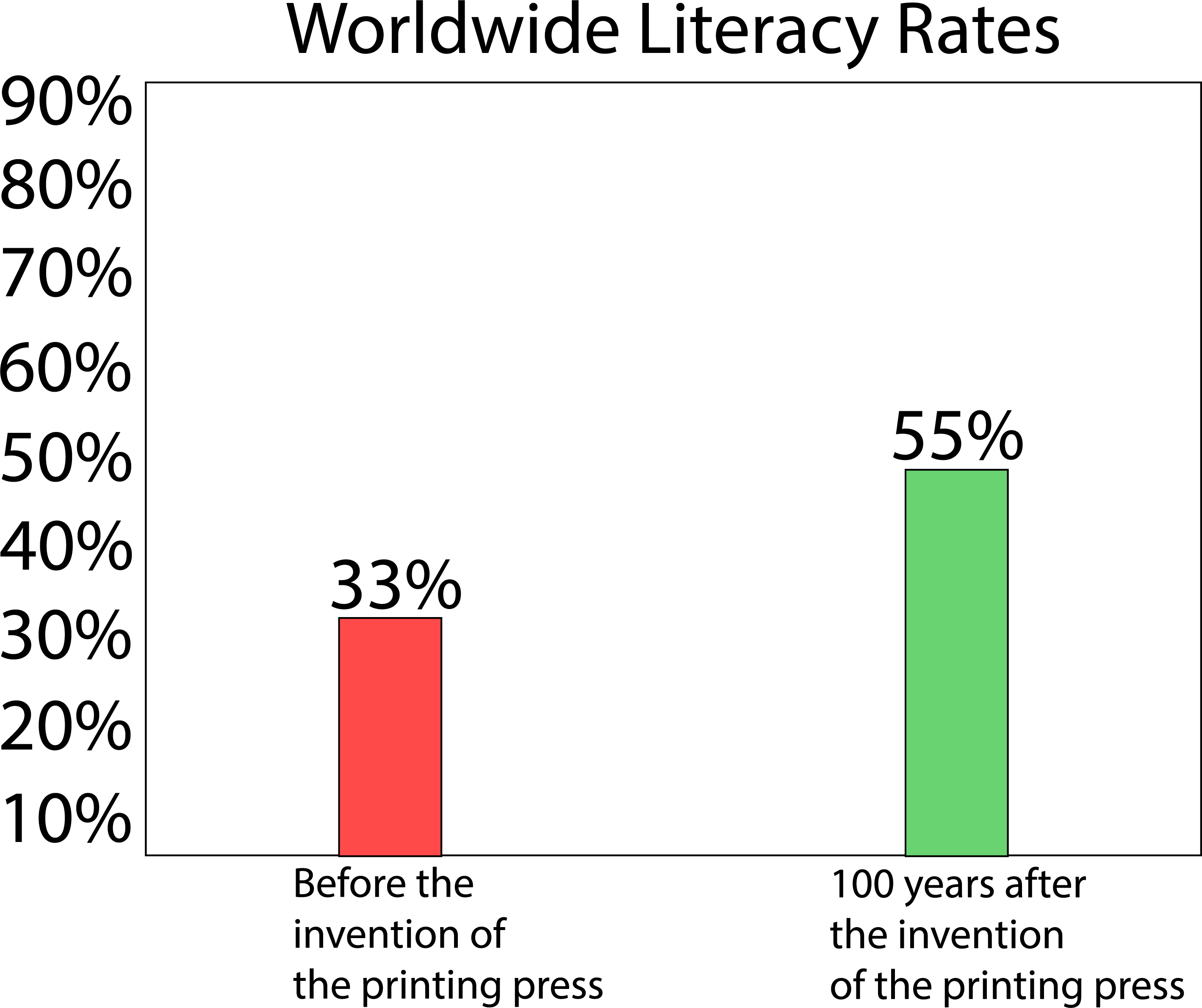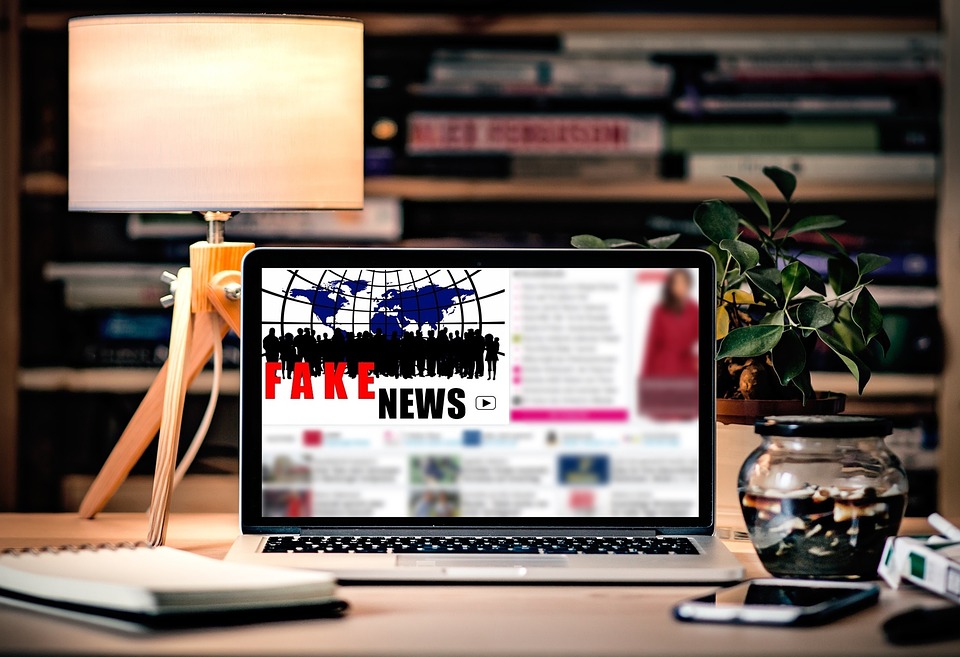The Printing Press and Beyond
The printing press iniated the "big bang" of technoligical advancement, as it was the first piece of the puzzle that showed just how advanced technology could become in the future. For example, with the printing press came the Bible, newspapers, gazettes, magazines, and other various texts that could be semi-mass produced to audiences far and wide. It began an era of widespread information and allowed for books to be in the hands of the common man, because hand-written texts prior were extremely expensive.
The birth of the printing press also had a giant impact on the worldwide literacy rates. Within 100 years of the invention of the printing press, worldwide literacy rates increased by over 20%. It democratized knowledge and allowed this knowledge to reach a wider audience and subsumed the age of orality. The print book, then, jettisoned our society into its first visual age, and perhaps laid the groundwork for the next visual ages (television, computer) to come.
Social Impact of the Printing Press
The printing press, and more importantly the books it manufactured, had a profound impact on culture from the 1500s all the way to the 1900s. For example, the printing press kickstarted the Scientific Revolution in 1543. This is because scientists all over Europe were now able to collaborate with eachother, as they could print their findings in scientific journals that could be shipped across the globe. The printing press also greatly increased the reliability and trustworthiness of various texts, because instead of having them copied by hand, where someone could embellish or change the narrative, they were all printed the same.
The Newspaper Stands Tall
Fast forward to the 20th century and the entire North American market has been flooded by their current most efficient way to broadcast information, The Newspaper. By 1900, major newspapers were now everyone's main source of local and national news. In the 1920s, the average American read up to 7 different newspapers a day. For the average American during WW1, newspapers were the most reliable option to stay up to date on exactly what was going on in the war. They were also some of the first publications to break the news of the Great Depression in 1929. Newspapers were also considered the most trustworthy forms of media during this time and had just as much influence back then as social media has today.
With the current controversy surrounding fake news, recent studies show that around 70% of people who read printed news publications trust it to be completely factual. On the other hand, only 33% of people who get their news from social media believe they can fully trust it. This means that the current fake news controversy is almost predominantly an attack on televised and digital news, while newspapers remain a trusted source of information for avid readers.



